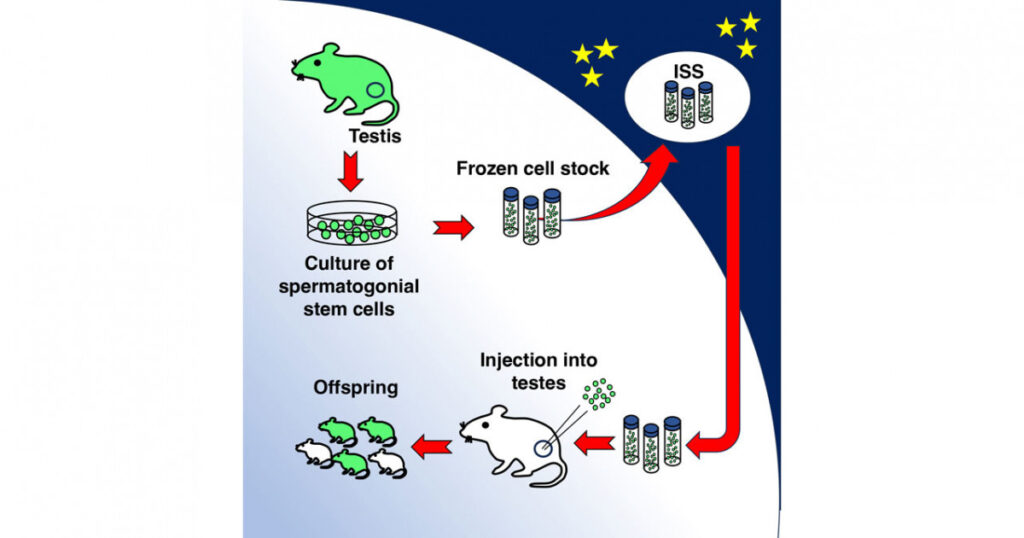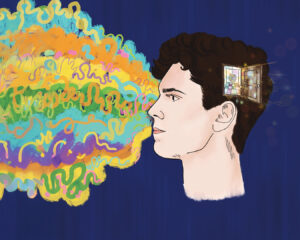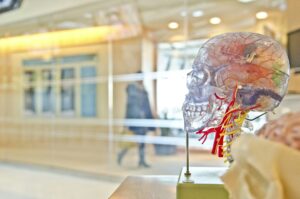
Kyoto, Japan — As humanity looks towards the stars for future exploration and potential colonization, the challenges of space travel continue to mount. Among these are the effects of spaceflight on human biology, including the impact on reproductive health. In a groundbreaking study, researchers from Kyoto University have successfully demonstrated that mouse spermatogonial stem cells can survive the rigors of space travel, potentially paving the way for future human reproductive capabilities in space.
Space travel presents numerous physiological challenges due to factors like gravitational changes, circadian rhythm disruption, and radiation exposure. These elements can lead to muscle wasting, decreased bone density, and possibly affect reproductive health by damaging germ cells — the precursors to eggs and sperm. The ability to produce healthy offspring in space is crucial for long-term colonization efforts.
Research Breakthrough in Space Biology
The Kyoto University team, led by first author Mito Kanatsu-Shinohara, embarked on a mission to understand the potential damage to spermatogonial stem cells during spaceflight. Using mouse stem cells, which have a shorter reproductive lifespan compared to humans, the researchers aimed to assess the viability of these cells after space exposure.
The experiment involved cryopreserving the stem cells and sending them to the International Space Station (ISS), where they were stored in a deep freezer for six months. Upon their return to Earth, the cells were thawed, expanded in vitro, and transplanted into mouse testes. Remarkably, within three to four months, the offspring born from these cells showed no apparent abnormalities and exhibited normal gene expression.
“It is important to examine how long we can store germ cells in the ISS to better understand the limits of storage for future human spaceflight,” stated Kanatsu-Shinohara.
Implications for Future Space Missions
The findings suggest that cryopreserved germ cells can maintain fertility for at least six months, a significant step forward in understanding reproductive viability in space. The research team initially hypothesized that spaceflight would be more detrimental to spermatogonial stem cells than cryopreservation due to radiation sensitivity. However, the results showed minimal differences between pre- and post-spaceflight germ cells.
This study contributes to the foundational knowledge necessary for developing germ cell preservation techniques for future long-haul space missions. The ability to cryopreserve and later utilize stem cells from various species, including humans, could be crucial for sustaining life during extended space travel.
Future Research and Long-Term Considerations
While the immediate results are promising, further research is needed to assess the long-term health and fertility of the mice offspring. The team plans to continue their analysis using additional spermatogonial stem cells still frozen on the ISS. Long-term studies will be essential to determine if any latent health issues arise over the lifespan of these mice and subsequent generations.
“We still have some spermatogonial stem cells frozen on the ISS, so we will continue to conduct further analysis,” Kanatsu-Shinohara confirmed.
This research not only advances our understanding of reproductive biology in space but also raises important questions about the future of human space exploration. As we push the boundaries of our presence in the cosmos, ensuring the health and viability of future generations will be a critical component of successful colonization efforts.
The announcement comes at a time when space agencies worldwide are ramping up efforts to explore Mars and beyond. The potential for human reproduction in space could transform these missions from temporary explorations to permanent settlements, fundamentally altering the trajectory of human civilization.






